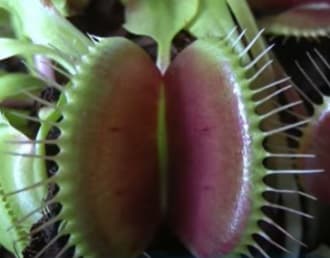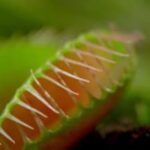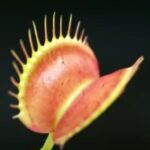As an Amazon Associate, this site earns commissions from qualifying purchases. For more details, click here.
Cultivating carnivorous plants like Venus flytraps and sundews together can create a mesmerizing and unique mini-ecosystem in your home or garden. These fascinating plants not only add a touch of exotic beauty but also serve as efficient insect catchers, making them a captivating addition to any collection of houseplants.
Key Takeaways:
- Optimal Conditions: Provide ample sunlight, acidic soil, and pure water for Venus flytraps and sundews.
- Careful Attention: Maintain high humidity and ensure proper air circulation to prevent fungal issues.
- Respect Dormancy: Mimic winter conditions for a period of dormancy to rejuvenate the plants.
Venus flytraps (Dionaea muscipula) and sundews (Drosera spp.) stand as two of the most renowned carnivorous plant species, celebrated for their intricate mechanisms to capture and digest prey. While Venus flytraps hail primarily from the wetlands of North and South Carolina, sundews find their habitats across diverse ecosystems, from bogs and swamps to grasslands around the globe.
Overview
Venus flytraps are botanical marvels, renowned for their hinged, tooth-like structures that snap shut when triggered by unsuspecting prey. Native to nutrient-poor, acidic soils, they demand specific care conditions to thrive. These include ample sunlight, well-draining soil, high humidity levels, and watering with pure, mineral-free water such as rainwater or distilled water to avoid harming their sensitive roots.
Sundews enchant with their sticky, glandular tentacles that lure, capture, and digest insects. With a myriad of species boasting diverse leaf shapes and sizes, sundews thrive in bright, indirect light and acidic, nutrient-poor soil. Similar to Venus flytraps, they necessitate high humidity levels and watering with pure water to flourish.
Related. Growing Pitcher Plants and Venus Flytraps Together
Light
Both Venus flytraps and sundews are sun-loving plants, thriving in environments with abundant sunlight. Providing them with 6-8 hours of bright, indirect sunlight daily is essential for their photosynthetic processes and overall health.
Placing them near south-facing windows or under grow lights can help meet their light requirements. Insufficient light can lead to weak growth, elongated leaves, and diminished trap function in Venus flytraps, while sundews may develop smaller leaves and reduced dew production.
Temperature
Maintaining optimal temperatures is equally important for Venus flytraps and sundews. Ideally, temperatures should be kept between 70-85°F (21-29°C) during the day to promote active growth and metabolic processes. These temperatures simulate the warm conditions of their natural habitats and encourage robust development.
However, it’s essential to provide slightly cooler temperatures at night, as this mimics the temperature fluctuations experienced in their native environments. Nighttime temperatures can safely drop by a few degrees, typically between 55-70°F (13-21°C), aiding in the plant’s overall health and resilience.

Factors such as extreme heat or cold can negatively impact both Venus flytraps and sundews. High temperatures above 90°F (32°C) can cause stress, wilting, and even leaf burn, particularly if combined with insufficient humidity.
Conversely, prolonged exposure to temperatures below 50°F (10°C) can lead to dormancy induction or even frost damage, affecting their growth and vitality.
Proper positioning of the plants, along with monitoring and regulating temperature fluctuations, helps create an optimal environment for Venus flytraps and sundews to thrive. By providing adequate light and maintaining suitable temperatures, growers can ensure healthy, vigorous growth and vibrant displays of carnivorous beauty.
Creating the right soil mixture and providing suitable water are crucial aspects of caring for Venus flytraps and sundews, mimicking their natural habitat conditions to support healthy growth and development.
Soil
The soil composition plays a vital role in the well-being of Venus flytraps and sundews. A well-draining, acidic potting mix is essential to replicate their native soil conditions and provide the necessary nutrients while preventing waterlogged roots.
A typical soil mixture for these carnivorous plants consists of sphagnum moss, perlite, and sand in specific proportions. Sphagnum moss retains moisture while allowing excess water to drain freely, preventing the soil from becoming waterlogged.
Perlite improves drainage and aeration, while sand adds weight and stability to the soil mix. Together, these components create a balanced substrate that promotes root health and nutrient uptake, mimicking the nutrient-poor conditions of their natural habitats.
Water
Proper watering is critical for the health and vitality of Venus flytraps and sundews. These plants have evolved in nutrient-poor environments with acidic soils, making them sensitive to the mineral content and pH of the water they receive.
Using distilled, rain, or reverse osmosis water is recommended to avoid mineral accumulation in the soil and maintain the acidic pH range preferred by these plants. Tap water, which often contains minerals and chemicals like chlorine and fluoride, can harm their sensitive roots and disrupt their nutrient absorption.
By watering with pure water sources, growers can ensure that their Venus flytraps and sundews receive the essential hydration they need without risking root damage or nutrient imbalances.
Moisture
Monitoring soil moisture levels is essential to prevent overwatering or underwatering, both of which can stress the plants and lead to root rot or dehydration. Venus flytraps and sundews prefer consistently moist but not waterlogged soil.
Watering frequency may vary depending on factors such as temperature, humidity, and pot size, so it’s crucial to observe the plants and adjust watering routines accordingly.
By providing a well-draining, acidic soil mix and watering with pure water sources, growers can create optimal growing conditions for Venus flytraps and sundews, fostering healthy root development, robust growth, and vibrant foliage. These simple yet essential practices contribute to the overall well-being of these fascinating carnivorous plants, ensuring they thrive and flourish in cultivation.
Humidity
Venus flytraps and sundews thrive in humid environments, reminiscent of the moist conditions found in their natural habitats. One method to increase humidity is by placing trays filled with water and pebbles beneath the pots. As the water evaporates, it creates a humid microclimate around the plants, promoting healthy growth and dew production.
Alternatively, utilizing humidifiers nearby can help maintain consistent humidity levels, especially in drier indoor environments. Adequate humidity not only benefits the plants’ overall health but also enhances their trapping efficiency by keeping the tentacles moist and sticky, ensuring successful insect capture and digestion.
Air Circulation
While humidity is beneficial, ensuring proper air circulation is equally important to prevent fungal diseases and maintain plant health. Adequate air movement helps to disperse excess moisture, reducing the risk of fungal pathogens such as Botrytis and Fusarium.
However, it’s essential to avoid direct drafts that might stress the plants, especially during colder months or in overly windy conditions. Positioning the plants in areas with gentle air movement, such as near a fan set on low speed, can help maintain a healthy balance between humidity and air circulation, promoting optimal growing conditions for Venus flytraps and sundews.
Feeding
While Venus flytraps and sundews are adept at capturing their own prey, supplemental feeding can provide a nutrient boost, particularly in nutrient-poor environments. Offering small insects like fruit flies, gnats, or ants every 2-4 weeks during the growing season can bolster their growth and vitality.
However, feeding is optional, as these plants can thrive solely on the nutrients obtained from captured insects. Observing the plants’ growth and health can help determine whether supplementary feeding is necessary to support their nutritional needs.
Dormancy
Winter dormancy is a natural phase essential for the long-term health and survival of Venus flytraps and sundews. Mimicking their native winter conditions helps rejuvenate the plants and prepares them for robust growth in the upcoming growing season. During dormancy, reduce watering frequency to allow the soil to partially dry out between waterings.
Expose the plants to cooler temperatures, ideally between 35-50°F (1-10°C), and reduce their exposure to sunlight to simulate shorter daylight hours. This period of rest allows the plants to conserve energy, strengthen their root systems, and prepare for vigorous growth when spring arrives. Respecting the winter dormancy period is crucial for maintaining the overall health and longevity of Venus flytraps and sundews in cultivation.
Common Pests for Venus Flytraps and Sundews
While Venus flytraps and sundews are renowned for their ability to capture insects, they too can fall victim to pests that threaten their health and vitality. Understanding the common pests that afflict these carnivorous plants is crucial for maintaining their well-being.
Aphids
Aphids are small, soft-bodied insects that feed on the sap of plants, including Venus flytraps and sundews. They can cause leaf distortion, yellowing, and wilting, leading to stunted growth and reduced vigor. Aphids reproduce rapidly, making early detection and intervention essential to prevent infestations.
Spider Mites
Spider mites are minuscule pests that thrive in dry, dusty conditions, often infesting the undersides of leaves. They puncture plant cells to feed on the sap, causing stippling, yellowing, and webbing on affected foliage. Spider mite infestations can quickly spread and weaken Venus flytraps and sundews, particularly in warm, dry environments.
Fungus Gnats
Fungus gnats are small, black flies that lay their eggs in moist soil, where their larvae feed on organic matter and plant roots. Larvae of fungus gnats can damage the roots of Venus flytraps and sundews, leading to reduced nutrient uptake and plant stress. Adult fungus gnats are nuisance pests that may disturb the plants and lay eggs in the soil, perpetuating the cycle of infestation.
Prevention
- Maintain proper growing conditions, including adequate sunlight, well-draining soil, and proper humidity levels, to promote plant vigor and resilience.
- Avoid overwatering, which can create favorable conditions for pests like fungus gnats and promote fungal diseases.
- Inspect new plants for signs of pests before introducing them to your collection, and quarantine any affected specimens to prevent the spread of infestations.
- Remove pests manually using methods such as hand-picking or gently washing the affected foliage with a stream of water.
- Prune and dispose of heavily infested plant parts to prevent the spread of pests and reduce their population.
Biological Control
- Introduce natural predators of common pests, such as predatory mites or beneficial nematodes, to help control infestations without the use of chemical pesticides.
- Encourage biodiversity in your garden or growing area to attract natural enemies of pests, such as ladybugs and lacewings, which can help keep pest populations in check.
Organic Treatments
- Use organic insecticidal soaps or neem oil-based sprays to target soft-bodied pests like aphids and spider mites while minimizing harm to beneficial insects and the environment.
- Apply treatments according to the manufacturer’s instructions and avoid spraying during periods of high temperatures or direct sunlight to prevent leaf damage.
By being vigilant and proactive in pest management, you can safeguard your Venus flytraps and sundews from common pests and ensure their continued health and vitality. With proper care and attention, your carnivorous plants can thrive and delight with their captivating beauty and insect-catching prowess for years to come.
Conclusion
Cultivating Venus flytraps and sundews together unveils a captivating journey into the realm of carnivorous flora. By providing the optimal growing conditions, you can curate a thriving carnivorous garden that serves as both an aesthetic wonder and a testament to the marvels of nature. With their enthralling traps and intricate adaptations, Venus flytraps and sundews offer an unparalleled experience, inviting enthusiasts of all levels to partake in the enchanting world of carnivorous plants.

My fascination with carnivorous plants began many, many years ago with Venus Fly Traps. Now I am more than happy to impart what I know with other enthusiasts and those who are curious about meat eating plants.


